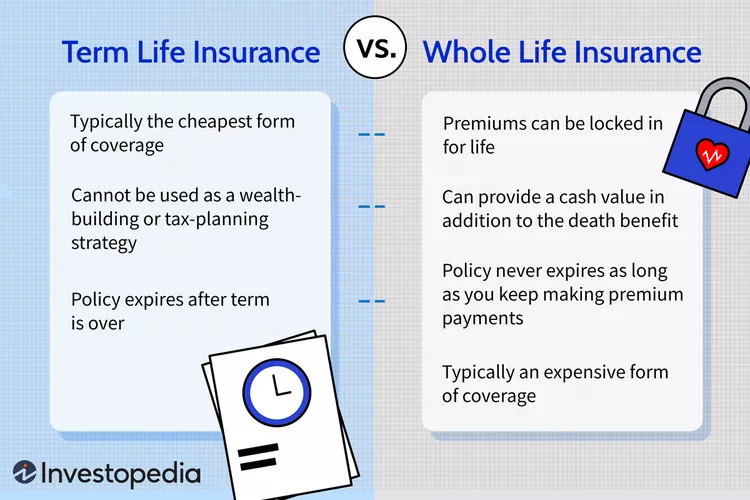How Cyber Insurance Can Protect Your Business from Digital Threats
Cyber Insurance Online in India today’s digital landscape, businesses face a growing array of cybersecurity threats that can severely impact their operations. One way to mitigate these risks is through cyber insurance, a type of policy designed to protect businesses from financial losses due to cyberattacks, data breaches, and other digital threats. This article delves deep into how cyber insurance can serve as a vital safety net for businesses, particularly those based in the USA, and how it plays a crucial role in protecting businesses from the fallout of digital threats.
II. Understanding Cyber Insurance
Cyber insurance is a relatively new but increasingly essential type of coverage that shields businesses from the financial consequences of cyber incidents. It has evolved significantly in the past decade as businesses become more aware of the pervasive nature of cyber risks. Cyber insurance typically covers data breaches, legal costs, business interruption, and cyber extortion events.
Key Components of a typical policy include:
- Data Breach Costs: Covering the expenses related to notifying affected individuals and conducting forensic investigations.
- Business Interruption: Compensating for lost revenue due to cyberattacks.
- Legal Expenses: Covering fines and settlements arising from lawsuits or regulatory fines.
Cyber insurance is distinct from general liability insurance, which doesn’t cover digital attacks or breaches.
III. Common Digital Threats
Cyber threats come in various forms, ranging from traditional hacking to more sophisticated methods like ransomware. Among the most common are:
- Hacking and Data Breaches: Hackers infiltrate systems to steal sensitive data.
- Phishing Attacks: Deceptive communications that trick employees into revealing sensitive information.
- Ransomware: A form of malware that locks a company’s data until a ransom is paid.
- Insider Threats: When an employee intentionally or unintentionally compromises a company’s security.
- DDoS Attacks: Disrupting services by overwhelming servers with excessive traffic.
IV. Types of Cyber Insurance Coverage
When choosing cyber insurance, understanding the different types of coverage is critical. Cyber insurance can be tailored to meet the specific needs of a business, but policies generally fall into two main categories: first-party and third-party coverage.
- First-Party Coverage: This covers losses that directly affect your business. For example, costs related to recovering from a data breach, notifying customers, and lost revenue from business interruption.
- Third-Party Coverage: This provides coverage for lawsuits or claims from clients or customers impacted by a cyber incident at your company. It includes legal fees, settlements, and other related expenses.
Other common types of coverage include:
- Liability for Data Breaches: Covers the costs associated with the exposure of personal or financial information.
- Business Interruption: Reimburses your company for lost income during downtime caused by a cyber incident.
- Cyber Extortion and Ransomware Coverage: Helps pay for ransom demands, as well as costs associated with negotiating and restoring systems.
- Coverage for Regulatory Fines: Helps cover fines imposed due to violations of privacy laws like GDPR or CCPA.
V. Why Your Business Needs Cyber Insurance
Cyber insurance is a crucial investment for businesses of all sizes, especially in the USA, where data breaches and cyberattacks are becoming increasingly common. Here are key reasons why your business needs it:
- Increasing Cyberattacks in the USA: Cybercrime is on the rise, with thousands of businesses across the country falling victim to attacks every year. Whether it’s ransomware, phishing, or sophisticated hacking, no business is immune.
- Financial Impact of Cyber Incidents: A data breach can cost a company millions of dollars in recovery efforts, legal fees, and loss of revenue. For small and medium-sized businesses, this can be devastating.
- Protection of Business Reputation: Beyond financial losses, a cyberattack can severely damage your reputation. Customers are less likely to trust a company that has experienced a data breach.
- Legal and Regulatory Compliance: With strict data protection regulations like GDPR and CCPA, businesses are required to follow rigorous compliance protocols. Failing to do so can result in hefty fines, and cyber insurance helps cover these legal liabilities.
VI. Choosing the Right Cyber Insurance Policy
Selecting the best cyber insurance policy for your business requires careful consideration of several factors:
- Assessing Your Business’s Risk Profile: Not all businesses face the same risks. For example, an e-commerce store might face different threats than a healthcare provider, which deals with sensitive medical data. Assess your unique vulnerabilities.
- Key Factors to Consider: Make sure your policy covers areas like data breaches, business interruptions, and legal costs. Understand the limits of coverage and whether they meet your business’s needs.
- Customizing Policies for Different Industries: Cyber insurance providers often offer industry-specific policies. For instance, companies in healthcare or finance may require more robust coverage due to the sensitive nature of the data they handle.
- Top USA Cyber Insurance Providers: Major providers include Chubb, AIG, and Hiscox, all of which offer tailored policies based on your industry and risk exposure.
VII. How Cyber Insurance Works in Case of an Attack
In the unfortunate event of a cyberattack, cyber insurance can help mitigate the damage. Here’s how the process typically works:
- Steps to Take When a Breach Occurs: Immediately notify your cyber insurance provider, who will guide you through the response. This may include working with a cybersecurity firm to assess the extent of the breach and notify affected parties.
- Role of Cyber Insurance in Post-Attack Response: A comprehensive policy should cover the costs of restoring systems, notifying customers, and handling PR efforts to protect your brand’s reputation.
- Compensation and Reimbursement Process: Once the claim is submitted, the insurance company will review the extent of the damage and compensate for covered losses, such as business downtime, data recovery, and legal fees.
- Case Studies: Successful Cyber Insurance Claims: In one case, a major retailer experienced a data breach that exposed millions of customer records. Their cyber insurance helped cover the legal costs, settlements, and customer notification expenses, minimizing the financial blow.
VIII. The Cost of Cyber Insurance
The cost of cyber insurance varies depending on factors like the size of your business, industry, and the level of risk you face.
- Factors Affecting Cyber Insurance Premiums: These include the amount of sensitive data your business handles, the security measures in place, and the history of prior cyber incidents.
- Average Cost of Cyber Insurance for Small Businesses in the USA: For small businesses, cyber insurance premiums typically range from $500 to $5,000 per year, depending on the level of coverage and the size of the company.
- Cost vs. Benefit Analysis: While the upfront cost may seem high, the potential financial losses from a cyberattack can be devastating. Cyber insurance is a small price to pay for the peace of mind it offers.
IX. Cyber Insurance and Data Privacy Regulations
In today’s regulatory landscape, businesses must comply with strict data privacy laws, and cyber insurance can be a key component in managing these compliance risks.
- Impact of Data Breach Notification Laws: In the USA, businesses must notify customers if their personal information is compromised. Cyber insurance can help cover these notification costs.
- GDPR, CCPA, and Their Influence on Cyber Insurance: Both the European Union’s General Data Protection Regulation (GDPR) and California’s Consumer Privacy Act (CCPA) require businesses to handle personal data responsibly. Failure to do so can result in large fines, which cyber insurance can help pay for.
- How Cyber Insurance Helps with Regulatory Compliance: Cyber insurance providers often offer resources to help businesses stay compliant with privacy regulations, reducing the likelihood of fines.
X. Cyber Insurance vs. Cybersecurity Measures
While cyber insurance is essential, it should not replace traditional cybersecurity measures.
- Cyber Insurance as a Part of a Broader Cybersecurity Strategy: Cyber insurance should work in tandem with preventive measures like firewalls, encryption, and employee training. Insurance is there to cover costs when breaches occur, but it’s better to prevent them from happening in the first place.
- Differences Between Insurance and Preventive Security Tools: Cyber insurance is reactive, designed to mitigate damage after an attack, whereas cybersecurity tools are proactive, working to prevent breaches.
- Can Cyber Insurance Replace Traditional Security?: No. Both are necessary for a well-rounded protection strategy.
XI. Benefits of Cyber Insurance
Cyber insurance offers numerous benefits that make it a smart investment for businesses:
- Financial Protection Against Cyber Losses: This includes covering the costs of data recovery, business interruption, and legal fees after a cyberattack.
- Legal Support and Representation: If a breach leads to lawsuits, cyber insurance can help with legal fees and settlement costs.
- Business Continuity After Cyber Incidents: The faster a business can recover from a cyberattack, the less impact it will have on operations. Cyber insurance ensures quick financial recovery, helping businesses get back on their feet.
- Peace of Mind for Business Owners: Knowing your business is protected provides peace of mind, allowing you to focus on growth without worrying about potential cyber threats.
XII. Challenges and Limitations of Cyber Insurance
Despite its benefits, cyber insurance does have its limitations:
- Limitations in Coverage: Not all cyber incidents may be covered by your policy. For example, some policies may exclude nation-state attacks or pre-existing vulnerabilities.
- Exclusions in Cyber Insurance Policies: Common exclusions include unencrypted data, insider threats, and failures to comply with security protocols.
- The Problem of Underinsurance: Some businesses may purchase insufficient coverage, leaving them vulnerable to significant financial losses if a large-scale attack occurs.
- Issues with Claim Approval: Cyber insurance claims can be denied if the business didn’t follow the necessary protocols or if the attack falls under an exclusion clause.
XIII. Future Trends in Cyber Insurance
Cyber insurance is an evolving field, and as digital threats continue to grow, new trends are emerging. These trends will shape the way businesses approach both cybersecurity and insurance in the future.
- Evolution of Cyber Insurance in Response to Emerging Threats: Cyberattacks are becoming more sophisticated, and insurance companies are constantly updating their policies to address new types of risks. For example, policies may need to adapt to cover the growing threat of attacks on cloud services or Internet of Things (IoT) devices.
- The Role of Artificial Intelligence and Machine Learning in Cyber Insurance: AI and machine learning are being used to analyze vast amounts of data to detect potential cyber risks before they occur. These technologies can help insurers better assess a company’s risk profile and tailor policies accordingly. AI tools can also streamline the claims process by detecting fraud and accelerating decision-making.
- Predictions for the Next Decade in Cyber Insurance: In the next decade, we can expect cyber insurance to become even more integral to businesses of all sizes. As regulations tighten and cyberattacks become more frequent, the demand for comprehensive cyber insurance policies will increase. There may also be a shift towards more proactive insurance models that include risk mitigation services like continuous monitoring and vulnerability assessments.
XIV. How to Get Cyber Insurance for Your Business
If you’re convinced of the need for cyber insurance, the next step is to secure a policy for your business. Here’s how to get started:
- Steps to Apply for Cyber Insurance: The first step is to assess your business’s risk profile. Insurers will ask for details about the types of data you store, the security measures in place, and your company’s history of cyber incidents. Be prepared to provide documentation, such as recent cybersecurity audits or compliance reports.
- What Information Do Insurers Need?: Insurers typically ask for information like the volume of sensitive data you handle, your IT infrastructure, and how frequently your systems are updated. They’ll also want to know what cybersecurity protocols are in place, such as employee training, firewalls, encryption, and incident response plans.
- Common Mistakes to Avoid When Buying Cyber Insurance: One common mistake is underestimating your cyber risk and purchasing insufficient coverage. Another is failing to fully understand what’s covered and what’s excluded from the policy. It’s important to read the fine print and work with an insurance expert to ensure you’re fully protected.
XV. Real-Life Cyber Incidents and Insurance
To understand the real impact of cyber insurance, it helps to look at some real-world cases where businesses have successfully used their coverage after an attack.
- Case Study 1: Data Breach at a Major USA Retailer: A well-known retail chain suffered a major data breach that exposed millions of customers’ credit card information. The breach resulted in significant financial losses, legal claims, and regulatory fines. Thanks to their comprehensive cyber insurance policy, the retailer was able to cover the costs of legal defense, settlements, and customer notifications, significantly reducing the overall financial impact.
- Case Study 2: Ransomware Attack on a Healthcare Provider: A large healthcare organization was hit with a ransomware attack that encrypted patient records and disrupted operations for several days. The organization’s cyber insurance policy covered the ransom payment, system restoration costs, and lost revenue from the downtime, allowing them to recover quickly and get back to serving patients.
- Case Study 3: Phishing Attack on a Financial Institution: A small financial institution fell victim to a phishing attack, which resulted in the theft of sensitive customer data. The institution’s cyber insurance policy helped cover the costs of notifying affected customers, legal fees, and credit monitoring services for the victims.
XVI. FAQs about Cyber Insurance
Businesses often have questions when considering cyber insurance. Here are answers to some of the most common questions.
- What Does Cyber Insurance Typically Cover?: Cyber insurance typically covers expenses related to data breaches, business interruption, ransomware payments, legal fees, and regulatory fines. It may also cover the costs of public relations efforts to restore your company’s reputation after an attack.
- Does Cyber Insurance Cover All Types of Cyber Incidents?: While cyber insurance covers a broad range of incidents, not all types of attacks may be included. For instance, some policies may exclude coverage for attacks by nation-states or insider threats. It’s essential to review your policy carefully to understand what’s covered and what’s excluded.
- Can Small Businesses Afford Cyber Insurance?: Yes, many cyber insurance providers offer affordable policies tailored to small businesses. The cost will depend on factors like your business’s size, industry, and risk profile, but even small businesses can find comprehensive coverage for a reasonable price.
- Is Cyber Insurance Mandatory for Businesses in the USA?: While cyber insurance is not yet legally required in the USA, it is becoming increasingly common. Many industries, especially those handling sensitive data like healthcare and finance, strongly recommend or require cyber insurance as part of their compliance protocols.
- How Often Should Cyber Insurance Policies Be Reviewed?: Cyber risks evolve rapidly, so it’s a good idea to review your cyber insurance policy annually. This ensures that your coverage remains adequate as your business grows and as new threats emerge.
XVII. Conclusion
As businesses continue to rely on digital systems for their day-to-day operations, the risk of cyberattacks will only increase. Cyber insurance provides an essential layer of protection, helping businesses recover from financial losses, legal liabilities, and reputational damage caused by cyber incidents.
In today’s digital world, cyber insurance is not just a luxury—it’s a necessity. It can make the difference between a company recovering quickly from a breach or being forced to shut its doors. By investing in a comprehensive cyber insurance policy, your business will be better prepared to navigate the unpredictable landscape of cyber threats.







